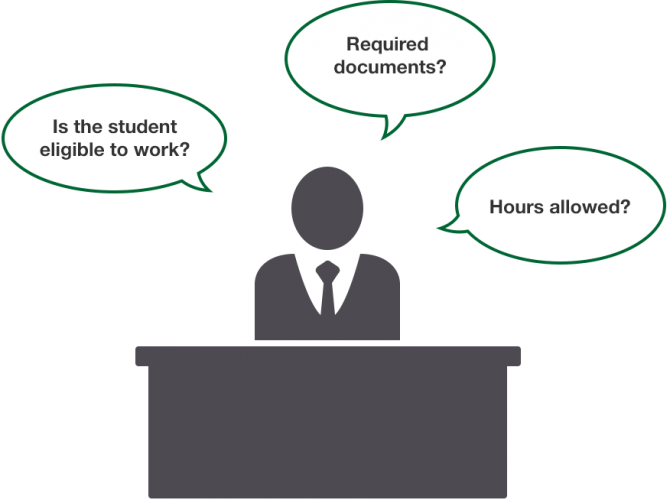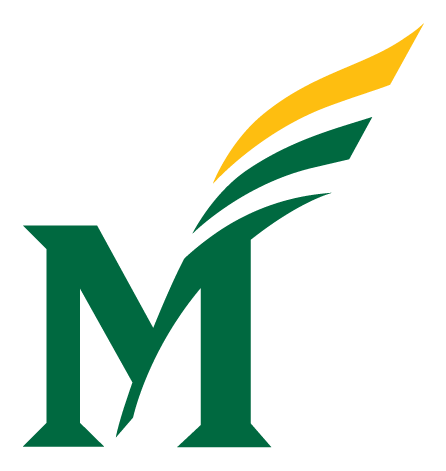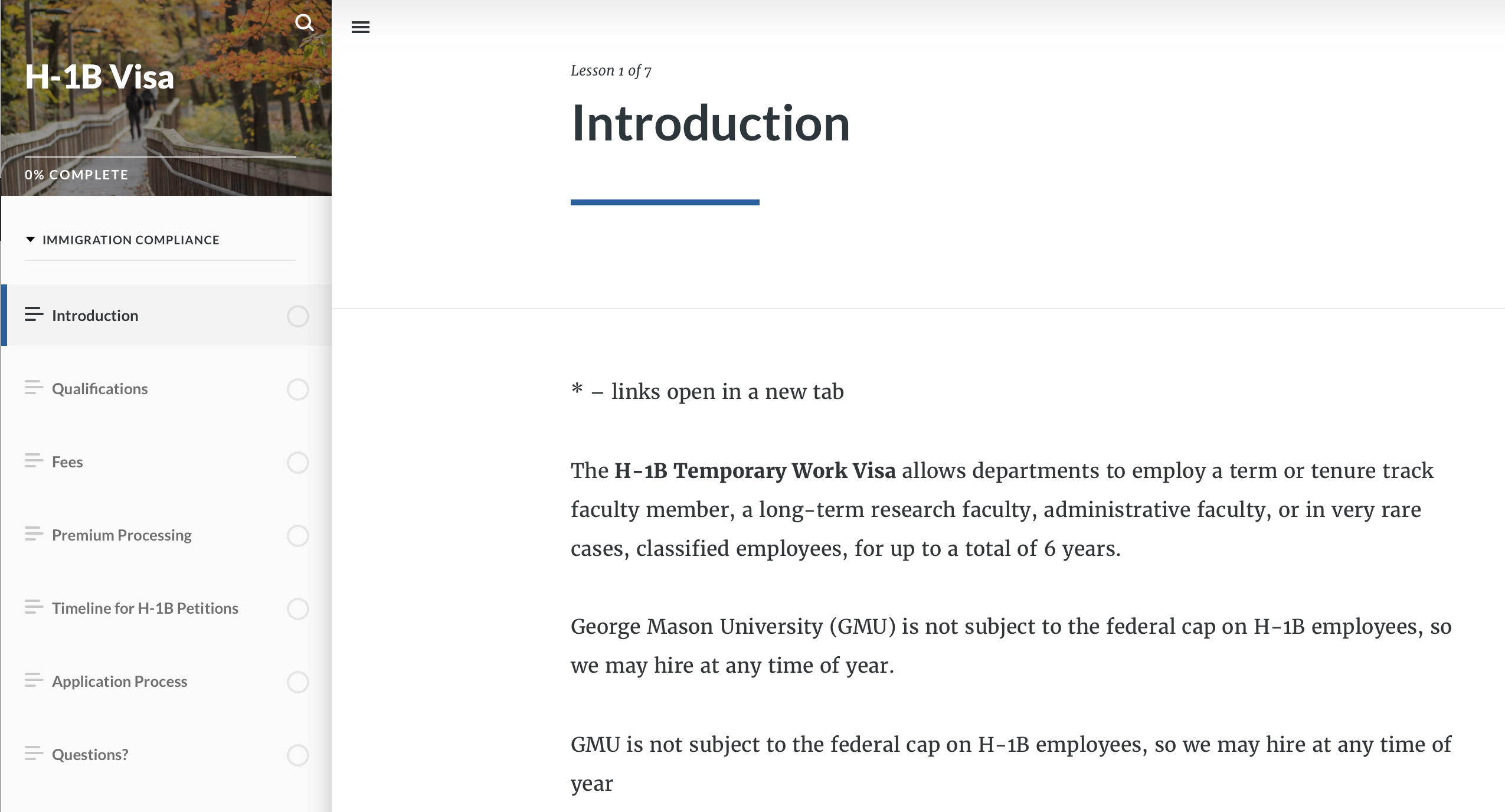Many companies hire F-1 and J-1 students while they study at Mason or after graduation. Understanding the different employment options and requirements can be difficult and confusing. OIPS has created a web page that will serve as your guide. It covers the different employment options, required forms, max. hours allowed and also refers you to useful resources.

F-1 and J-1 students ALWAYS require written permission to work off campus, either from an OIPS advisor on the Form I-20 (p. 2)/Form DS-2019 (p. 1) or from the US Citizenship and Immigration Services (USCIS).
On this page, you will find information about:
- On-campus Employment
- Getting a Social Security Number
- GRA/GTA
- CPT
- Academic Training
- OPT
- J-1 Scholars
- H-1B Temporary Work Visa
- Legal Permanent Residency
If you have questions about employment options, please complete the request form or call the front desk at (703) 993-2970.
On-campus Employment
F-1 and J-1 students may work on any of Mason's three US campuses (Fairfax, Arlington and SciTech) up to 20 hours per week during spring and fall semesters, and full-time during vacation periods (summer, winter, and spring breaks).
The student and employer need to complete the On-campus Employment Certification form before they can begin work. In addition, J-1 China 1-2-1 students also need approval from their program coordinator and INTO Mason students need approval from their academic advisor before they can begin work
Click here to learn more about on-campus employment.
Getting a Social Security Number (SSN)
F-1 and J-1 students can apply for a Social Security Number (SSN) AFTER they get a job offer.
Important: Newly arrived F-1 or J-1 students with an on-campus job offer should wait 10 days after arriving in the U.S. before applying for an SSN. The Social Security Administration (SSA) uses the Systematic Alien Verification for Entitlements (SAVE) program to verify your immigration status information against records contained in the Department of Homeland Security databases, including those housed by U.S. Citizenship and Immigration Services, U.S. Customs and Border Protection, and U.S. Immigration and Customs Enforcement. Since the verification relies on the original data source, you must allow time for your arrival information to update in all government systems. (Source: Study in the States)
Graduate Research Assistantship (GRA) and Graduate Teaching Assistantship (GTA)
Graduate Research Assistants (GRA) and Graduate Teaching Assistants (GTA) in F-1 status need to review and complete the steps in the New International Employee guide before they begin work.
GRA and GTA in F-1 status have restrictions set on additional or continued employment with the university:
- GRA or GTA who signed a 20-hour contract may not accept additional or outside employment while performing the duties of their assistantship during the fall and spring semesters.
- GRA or GTA may obtain additional employment on or off campus using Curricular Practical Training (CPT) or Pre-Completion Optional Practical Training (OPT) during the summer session. (Scroll down to learn more about CPT and OPT).
Important: GRA or GTA who will graduate during the semester MUST stop work as a student employee on the last day of exams for the semester that they graduate. Often, these contracts may go several weeks past the last date of exams for the semester. Departments and students need to be aware of this issue and take proper action to terminate the GRA/GTA promptly after last day of exams for the completion semester and the student must continue to work in a non-student type of position using the Employment Authorization Document issued by USCIS.
Types of Training
Curricular Practical Training (CPT)
CPT is an authorization to participate temporarily in an internship, the co-operative education program or required thesis/dissertation project. F-1 students can work maximum 20 hours per week during the fall and spring semesters and full-time during summer only.
F-1 students need to apply for CPT and submit several required documents. The student and employer will have to draft a position description and complete the CPT application. The application process takes 3-4 weeks. If approved, the CPT authorization will be entered on page 2 of the student's I-20.
Click here to learn more about CPT.
Academic Training (AT)
J-1 students have the option to engage in Academic Training (AT). AT is a type of off-campus authorization in a student’s field of study. It can be paid and unpaid; both during studies as well as after completing studies. The J-1 student's program sponsor (the institution that issues the DS-2019) must evaluate the effectiveness and appropriateness of the academic training in achieving the stated goals and objectives in order to ensure the quality of the academic training program.
Click here to learn more.
Optional Practical Training
OPT is one type of work permission available for eligible F-1 students. It allows students to get real-world work experience related to their field of study.
F-1 students can engage in OPT while you are still attending school (pre-completion OPT) and/or after you graduate (post-completion OPT).
The maximum length of OPT is 12 months. If STEM eligible, student may apply for an additional 24 months if they have an E-verify employer and are working 20 or more hours per week. F-1 students engaged in pre-completion OPT can work maximum 20 hours per week during fall and spring semesters and full-time during summer. F-1 students engaged in post-completion OPT must work at least 20 hours per week.
F-1 students need to apply for OPT. OIPS recommends students for OPT and U.S. Citizenship and Immigration Services (USCIS) approves the application. If approved, the student will receive an Employment Authorization Card (EAD) from USCIS. The application process can take up to four months. Students can begin work ONLY when both of these conditions have been met:
- Student has received their Employment Authorization Document (EAD) card; AND
- The employment start date indicated on the EAD card has been reached.
Click here to learn more about OPT.
Many employees at George Mason University begin their career using their Employment Authorization Document (EAD) card to complete the I-9 form. When the employee is in the last few months of Optional Training (OPT) or STEM OPT, the Mason employer may begin to initiate a change of status to J Exchange Visitor or H-1B Temporary Worker for the employee (see below for more information). This process begins with the department seeking sponsorship and should begin no later than six months prior to the OPT expiration date.
NEW: Training Plan for STEM OPT Students Sample (Mason employer)
J-1 Scholars
The J-1 Exchange Visitor Program operates under the auspices of the U. S. Department of State’s Bureau of Educational and Cultural Affairs. The purpose of the Exchange Visitor Program is to increase mutual understanding between the people of the United States and the people of other countries by means of educational and cultural exchanges. Each Exchange Visitor Program has a program description under which that program must operate and designates an individual or individuals as the University staff responsible for the administration of the particular J-1 program.
The J-1 Visa is useful for departments wishing to host visiting professors and researchers for a limited period of time. George Mason University is currently designated to host Scholars in three J-1 categories: Research Scholar, Professor and Short-Term Scholar
Click here to learn more.
H-1B Temporary Work Visa
The H-1B visa category is a temporary work visa for non-US workers in a position that requires at least a bachelor’s degree. The H-1B is typically used for tenure-track or term faculty, long-term academic researchers, and professional staff. In order to obtain an H-1B for an employee, the employer must document the appropriateness of the wages to be paid, the duties and responsibilities of the position to be filled, and the employee’s qualifications to fill that position.
One may hold H-1B status for a maximum period of 6 years. Since the Labor Condition Application must be renewed every three years, H-1B petitions are submitted for three years (or less), and may be renewed until the maximum period of 6 years has been reached. 7th year extensions are permitted under certain conditions.
Click here to access the H-1B web page.
Please click here to access the online tutorial.
Legal Permanent Residency (LPR)
George Mason University currently sponsors eligible faculty members for Legal Permanent Residency (LPR) in two categories: Employment Based-1 Outstanding Researchers/Professors and Employment Based-2 PERM/Special Handling.
Important: The LPR process at Mason must be initiated and approved by the faculty member’s department. Mason faculty members cannot initiate any process for Legal Permanent Residency.
Click here to learn more about LPR.

